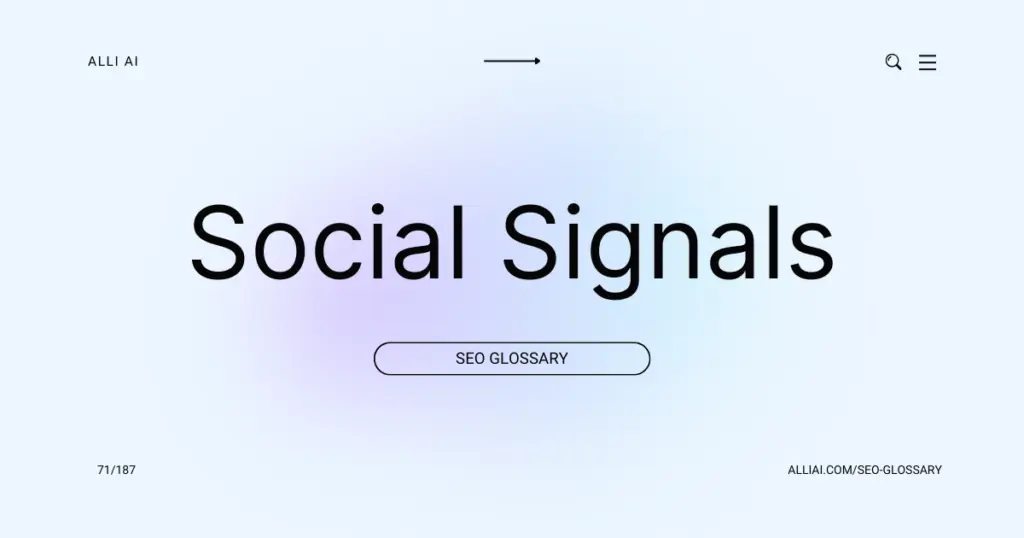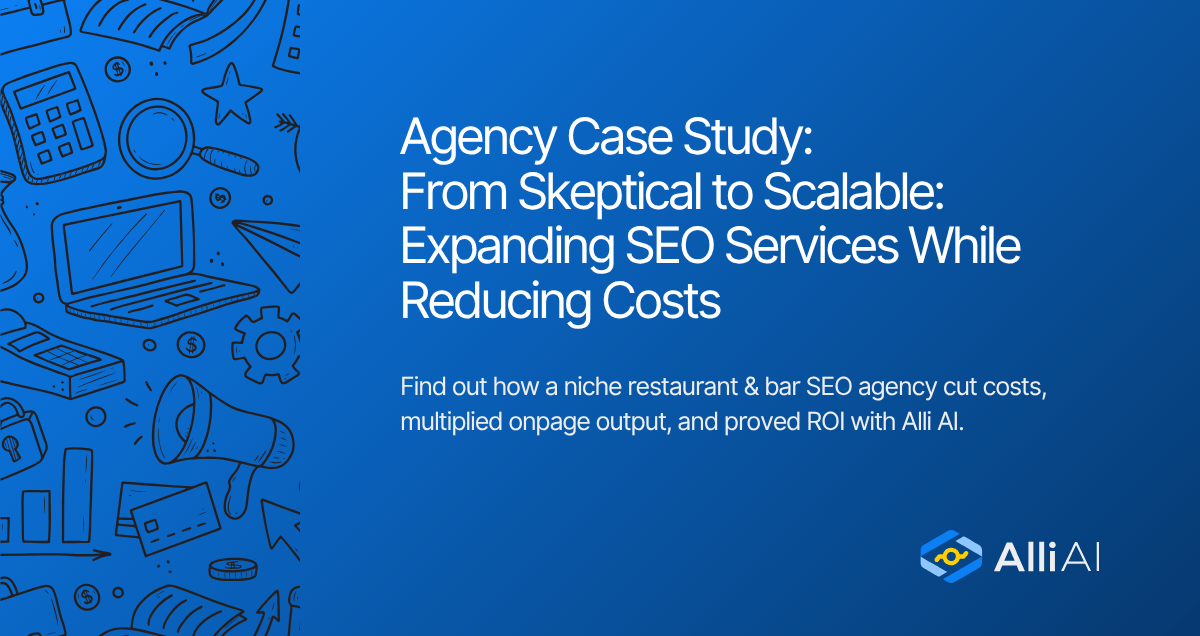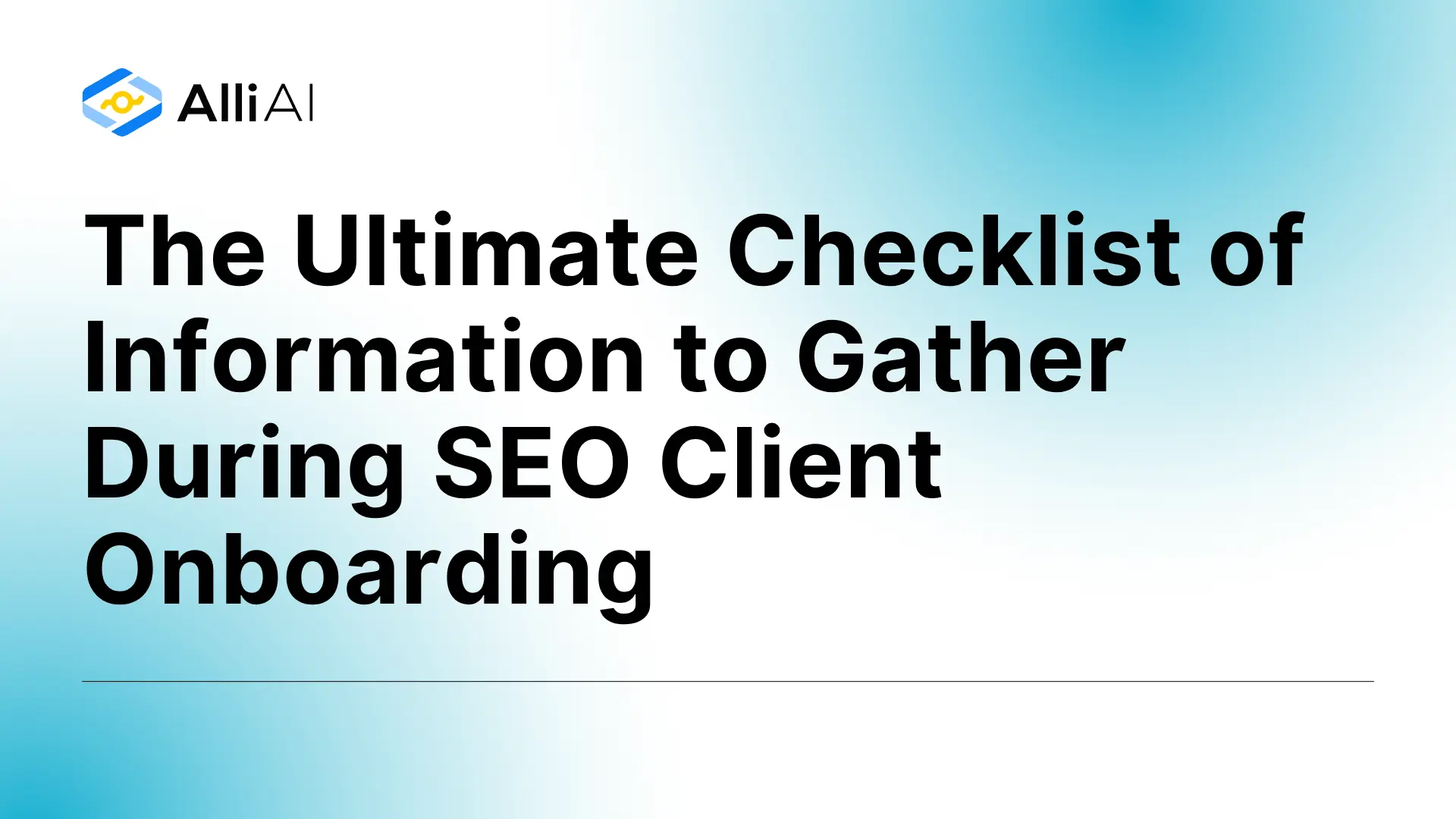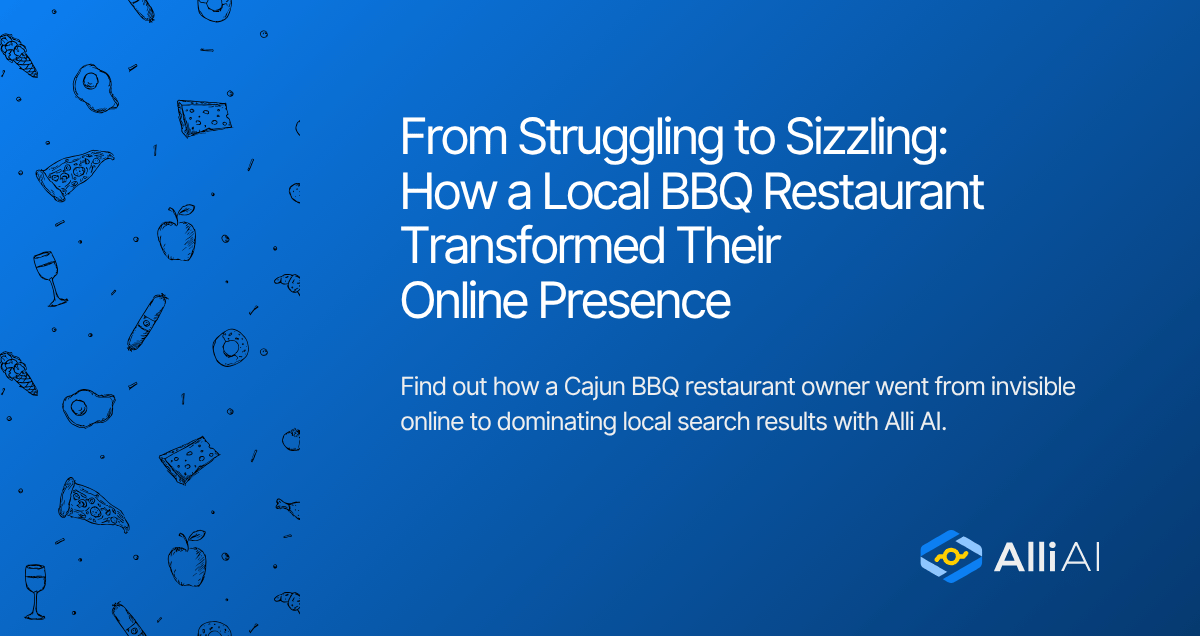What Does Social Signals Mean?
Social signals refer to the collective shares, likes, and overall social media visibility as perceived by search engines. These activities contribute to a page’s organic search ranking and are seen as a form of user endorsement for the content.
Where Does Social Signals Fit Into The Broader SEO Landscape?
Social signals refer to the likes, shares, views, votes, pins, or comments people give to content on social media platforms like Facebook, Twitter, LinkedIn, Instagram, and Pinterest. In the broader SEO landscape, social signals can indirectly influence a website’s search engine rankings. Although not a direct ranking factor, these signals indicate content popularity and engagement, which can lead to increased visibility and traffic. This enhanced engagement and visibility can encourage more inbound links from various websites, as content that is highly shared is more likely to be seen and linked to by other content creators. Additionally, search engines may crawl social media websites and notice these signals, which can help faster indexing of content. Social media profiles and posts also often appear in search results, improving brand visibility and organic search visibility, potentially leading to more clicks to the website.
Real Life Analogies or Metaphors to Explain Social Signals
1. Social signals are like applause at a concert: the louder and more frequent the applause, the more popular the performance is considered. Similarly, likes, shares, and comments represent a digital applause indicating content’s popularity and quality.
2. Social signals can be compared to word-of-mouth in a bustling marketplace: if many people are talking about a product, it naturally attracts more attention and trust, much like extensive social media interactions signal to search engines that content is valuable and engaging.
3. Think of social signals as votes in a public election: each like, share, or comment is a vote of confidence in your content. The more votes you get, the more authoritative and trustworthy your site appears to search engines.
4. Social signals act like roots of a tree: Just as roots help a tree absorb nutrients and water for growth, social signals help your content absorb attention and authority from social interactions, thereby helping it grow in visibility and importance in search engines.
5. They are like bees to flowers: just as bees are attracted to flowers and their activity around the flowers spreads pollen, social signals attract viewers and their interactions spread the content’s reach and impact online.
How the Social Signals Functions or is Implemented?
1. Content Creation: Publish high-quality, engaging content on a website.
2. Content Sharing: Share this content on social media platforms like Facebook, Twitter, LinkedIn, Instagram, etc.
3. User Interaction: Users interact with the content through likes, shares, comments, retweets, etc.
4. Tracking Tools: Use tools to track these interactions (e.g., Google Analytics, Hootsuite, BuzzSumo).
5. Search Engine Crawlers: Crawlers note these social signals.
6. Algorithm Analysis: Algorithms analyze the nature and volume of these signals to assess content relevance and popularity.
7. Search Engine Ranking: Based on analysis, search engines may alter website rankings within search results.
Impact Social Signals has on SEO
Social signals refer to the likes, shares, comments, and overall online visibility of your content on social networking platforms, and they can affect SEO in several ways:
1. Indirect Impact on Rankings: Directly, social signals do not influence rankings as search engines like Google have stated that they do not take social media popularity into account as a ranking factor. However, indirectly, a strong presence on social media can lead to more visibility for your content, greater brand recognition, and increased site traffic through organic sharing and visibility, all of which can positively impact SEO rankings.
2. Enhanced Content Distribution: Social sharing helps spread content to a wider audience quickly. This broad distribution can drive traffic to a website, leading to increased engagement metrics which are beneficial for SEO.
3. Longer Content Lifespan: By continuously generating social signals, the lifespan of posts and articles is extended as they continue to be shared and discussed over time, maintaining the content’s relevance and keeping traffic coming to the website.
4. Improved Domain Authority: Increased engagement and backlinks from social media sharing can contribute to a website’s domain authority, indirectly boosting SEO efforts by making the site more likely to rank higher.
5. User Interaction Signals: Social media can help facilitate more engagement with a brand’s content. Google and other search engines can interpret this interaction level as a quality indicator that enhances a website’s credibility and user trustworthiness.
6. Search Query Volume Increase: Popular content on social media can lead to more people searching for your brand or website directly on search engines, which in turn can boost SEO rankings as it shows increased interest and relevance.
These elements contribute to the overall user experience by bolstering user engagement and satisfaction.
SEO Best Practices For Social Signals
1. Create High-Quality Content: Ensure your content is informative, engaging, and addresses the needs and interests of your target audience.
2. Include Share Buttons: Add social media sharing buttons to your website’s content pages and blog posts to make it easy for visitors to share your content.
3. Encourage Sharing: Prompt readers to share your content at the end of your articles with calls to action, such as “Share this post if you found it helpful!”
4. Use Social Media Profiles Effectively: Regularly update your business’s social media profiles with compelling content and engage in conversations with your followers.
5. Optimize Your Social Media Profiles: Make sure your profiles are complete and use relevant keywords so that they are discoverable in search results.
6. Utilize Social Media Ads: Invest in social media advertisements to increase your visibility and your content’s reach across platforms.
7. Interact with Followers: Respond to comments, questions, and messages on your social media platforms to foster an engaged community.
8. Use Hashtags Strategically: Include relevant hashtags in your posts to increase their visibility and discoverability on social media platforms.
9. Post Regularly: Maintain an active posting schedule to keep your audience engaged and to signal that your brand is active and relevant.
10. Analyze Your Impact: Use analytics tools provided by social media platforms to track the performance of your posts and understand your audience preferences. Adjust your strategy based on these insights.
Common Mistakes To Avoid
1. Ignoring Platform Demographics:
– Focus efforts on platforms where your target audience is active.
2. Overemphasis on Quantity over Quality:
– Prioritize engaging, high-quality social interactions instead of just increasing the number of followers or likes.
3. Inconsistent Brand Messaging:
– Maintain consistent brand voice and messaging across all social media platforms.
4. Neglecting User Engagement:
– Regularly interact with users through comments, messages, and posts.
5. Failure to Monitor Metrics:
– Keep track of engagement rates, follower growth, and other relevant metrics to gauge performance.
6. Automating Too Much:
– Use automation tools wisely; ensure personalized and humanized communication when necessary.
7. Spamming Links:
– Share links sparingly and ensure they provide value to the followers, avoiding excessive promotional content.
8. Ignoring Negative Feedback:
– Address negative comments and feedback promptly and professionally.
9. Failing to Adapt to Algorithm Changes:
– Stay updated with changes in social media algorithms and adjust strategies accordingly.
10. Overlooking Local and Niche Social Platforms:
– Also engage with local and niche platforms where applicable to capture a more dedicated audience segment.
11. Neglecting the Visual Aspect:
– Use high-quality, engaging visual content tailored to each platform to boost engagement.
12. Not Setting Clear Goals:
– Define clear, measurable goals for what you aim to achieve through your social media activities.
13. Lack of Cross-Promotion:
– Promote social media content across various platforms to broaden reach and reinforce messages.
14. Ignoring the Importance of Timing:
– Post content when your audience is most active to maximize visibility and engagement.
15. Not Using Paid Advertising Wisely:
– Use paid social media advertising strategically to boost visibility and reach targeted audiences effectively.






